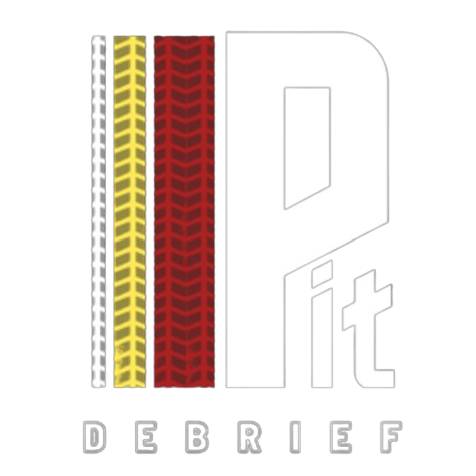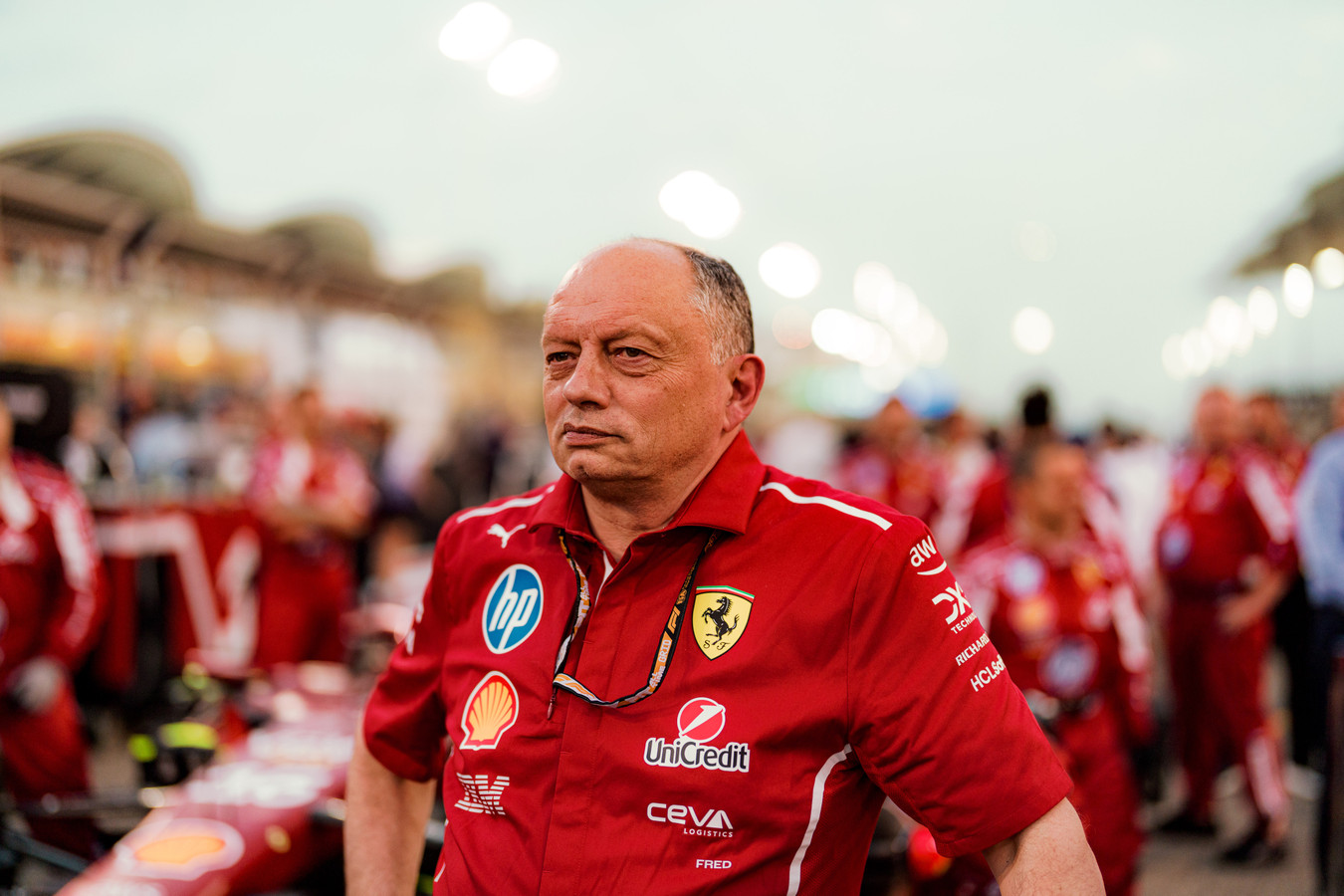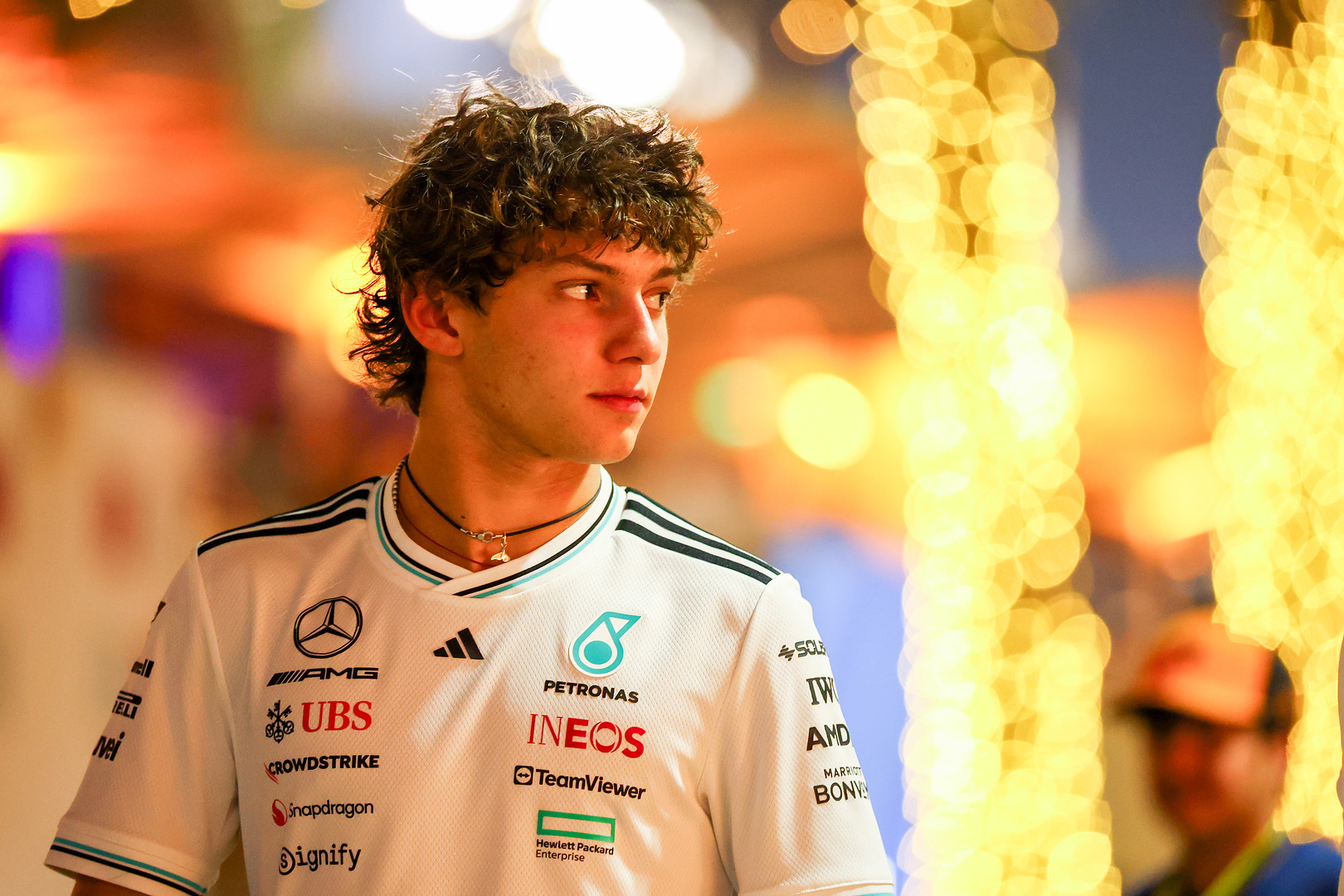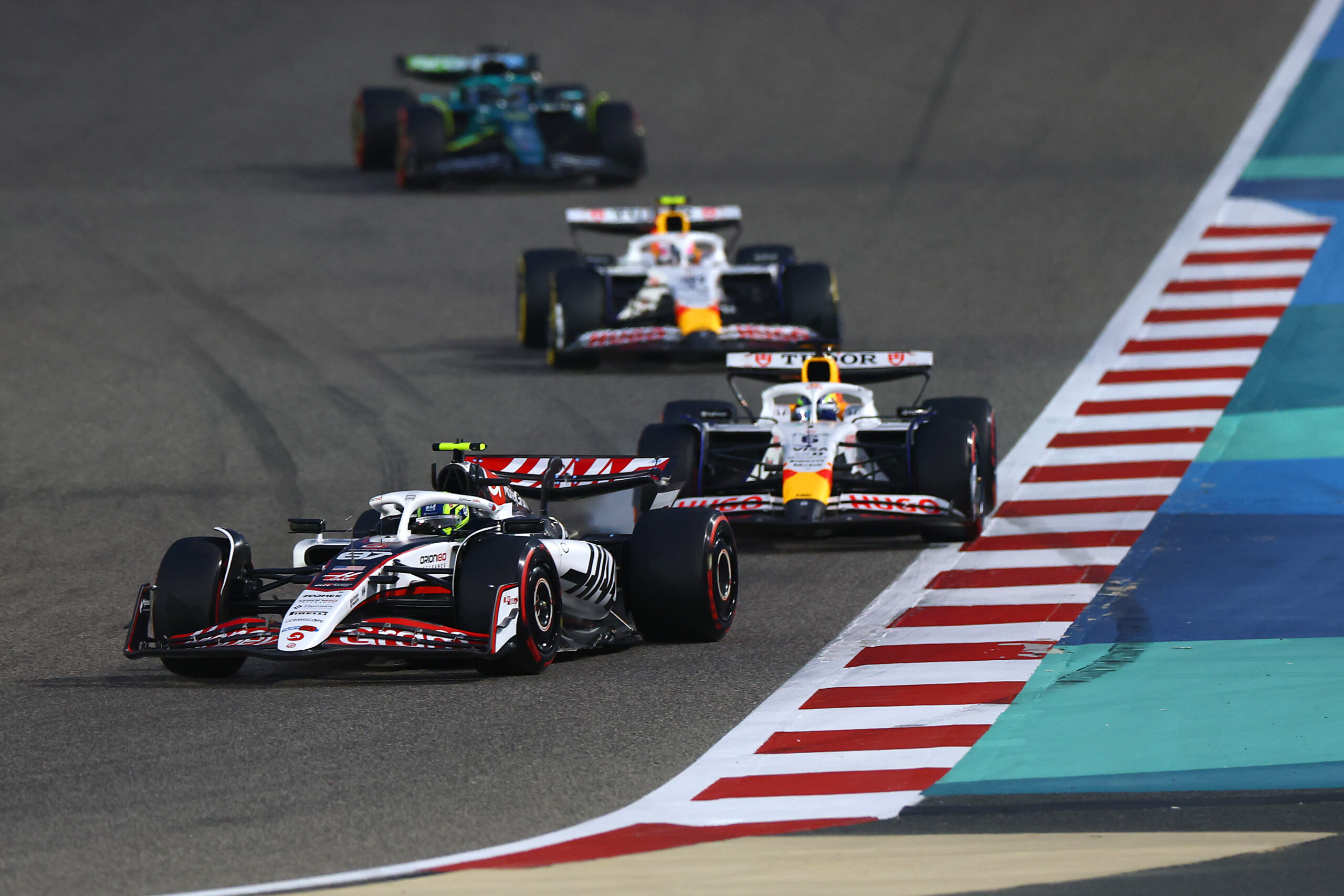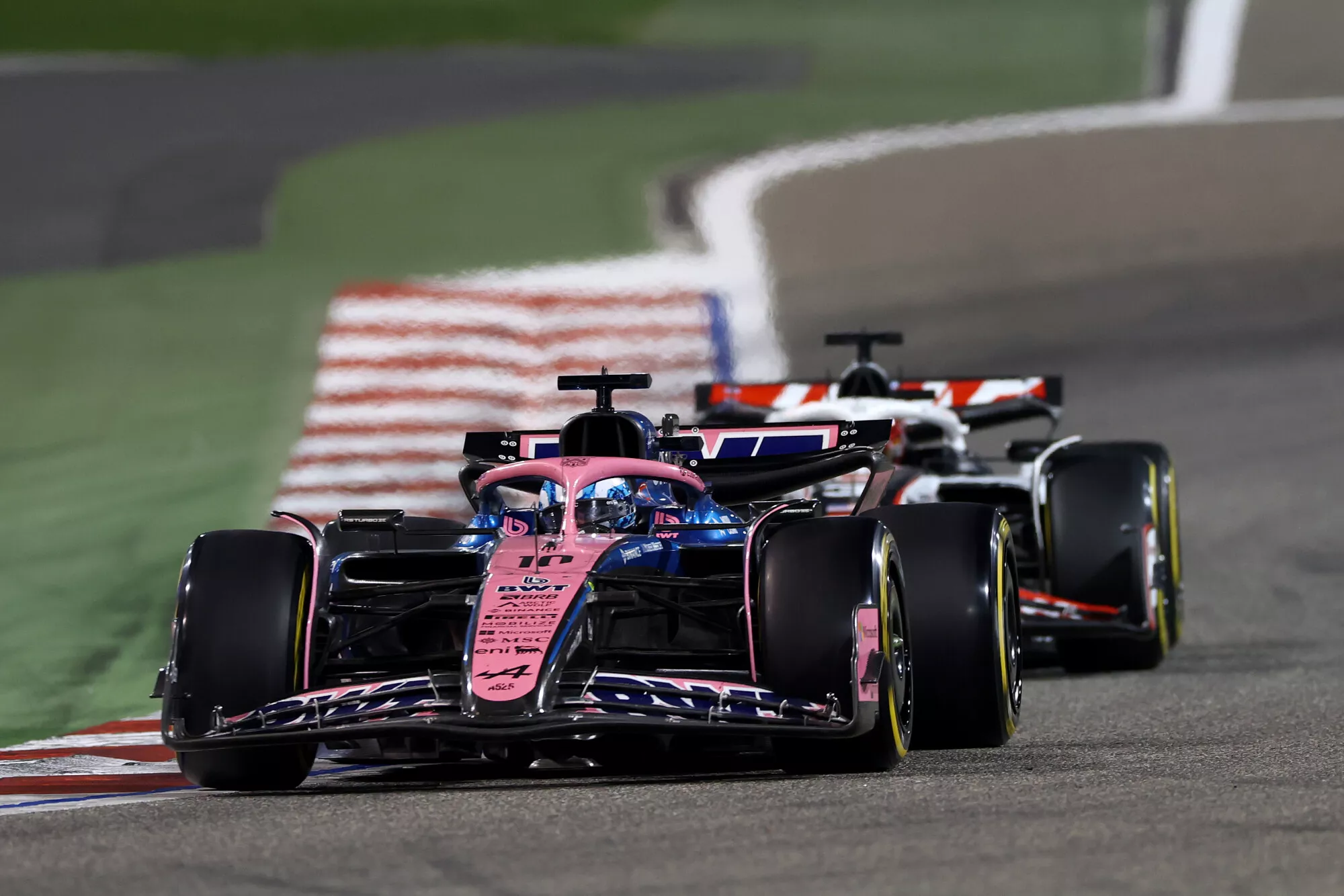Team principal Fred Vasseur has opened up about Ferrari’s interesting strategy direction after Charles Leclerc and Lewis Hamilton took the chequered flag at the F1 Bahrain GP in fourth and fifth positions respectively.
The Ferrari drivers happened to be the only ones in the top ten to start their race on the medium compound tyres, while the rest opted for the softs.
After setting the third-fastest time in qualifying, Leclerc lined up P2 on the grid on Sunday following the one-place grid drop that George Russell received.
Despite losing a couple of positions off the line, the Monégasque driver showed strong pace in his second stint on the mediums and executed a brilliant overtake on Lando Norris on lap 25. Leclerc, unfortunately, had to settle for fourth after putting up a good fight against the Brit, who was on a faster compound, in the final stages of the race.
Meanwhile, after struggling for pace and finding himself in ninth place, nearly six tenths off his teammate’s lap time in Q3, Hamilton found some performance on Sunday and made several overtakes to cross the line in P5.
Vasseur defends Ferrari strategy to start the race on mediums
Mercedes were rather audacious with their strategy, and Russell finished second after bolting on a set of scrubbed softs for his final stint of the race on Sunday.
Asked if the softs were a viable option for the Ferrari duo as well, Fred Vasseur responded in his post-race interview that the softest compound was not a practical choice for such a long stint, alluding to the high degradation the team witnessed during Hamilton’s long run on the soft tyres in FP2.
Vasseur explained that the Scuderia opted to start the race on the medium tyres to avail themselves of the flexibility of bolting on the hard or the soft tyres for the final stint of the F1 Bahrain GP. Furthermore, remarking that an ill-timed Safety Car is part and parcel of the sport, he claimed that their strategy would’ve delivered better results if the drivers had managed to extend their strong second stint on the mediums.
“It was the risky, aggressive side of the choice that we had the flexibility at the end, depending on how many laps you extend, to choose for hard or for scrub soft.
“With the Safety Car, we had no choice, at least from our perspective.
“I think for Russell also, he considered at one stage that it was mega ambitious to do 24 laps, but in the end it paid off. Probably the track was a bit fuller with more rubber and so.
“But no, I think the initial strategy was the good one that we paid the price on the first stint to extend a little bit, but then the pace was very strong and it would’ve been a good one, but we can’t complain about the Safety Car, it’s part of the game.”
Vasseur says all teams, except for McLaren, are going in blind when it comes to strategy
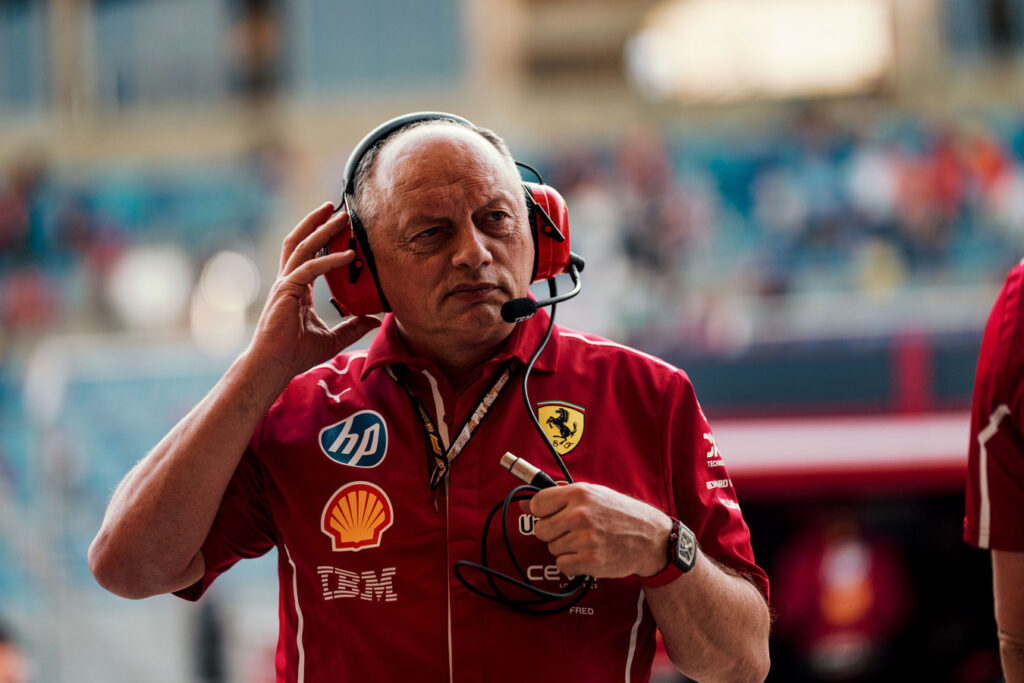
In terms of whether he was surprised that Ferrari were the only top team to start the race on mediums and whether the pit wall would’ve made a different choice if the Safety Car wasn’t deployed on lap 32, Fred Vasseur admitted that the neutralisation forced their hand to select the hard compound tyres instead of the soft ones for the final stint of the F1 Bahrain GP.
Stating that the majority of the teams went into Sunday’s race uncertain about how their strategies would play out on the highly abrasive Bahrain International Circuit, the 56-year-old singled out McLaren as the only team with the ability to confidently play with their tyre choices so far in the season.
“Without the Safety Car, we would’ve had the choice between soft and hard, but with the Safety Car, for us, it was not anymore an option because I think at this stage it was 24 laps or I don’t remember.
“But overall, I think if you have a look at the race, it was a bit chaotic in terms of strategy. We have races when 90% of the field is doing exactly the same thing and it was not the case.
“Because I think even Kimi [Antonelli] put the soft before the Safety Car. It means that he was supposed, I think, to do three stops at this stage.
“But we are still at the early stage of this compound and I think we are all a bit blind, but it’s part of the game and I think McLaren is better so far on this side of the game.”
Vasseur claims delta between different tyre compounds is smaller this year
With regard to every driver on the hard tyres struggling at the end and whether the hardest compound being the worst tyre for the F1 Bahrain GP was a surprising outcome, Fred Vasseur refused to label the hard tyres as the worst ones and opted to label the softs as the best ones instead.
Nonetheless, the Ferrari team boss explained that the harder compounds losing their performance edge can be chalked up to not only the difference in track conditions during FP2 and Sunday’s race under the lights in Bahrain but also the smaller delta between the three tyre compounds this year.
“The worst? Yeah, I would avoid saying this. I would say that the soft was the best.
“Yeah, but it’s true that it’s very linked to the conditions and the FP2 was a bit hotter with less grip and the delta between compounds is also much smaller than last year.
“It means that sometimes it’s really on the edge and the best example is that I think [in] the second stint we had all the compounds on track from soft to hard and everybody was trying different options.”
